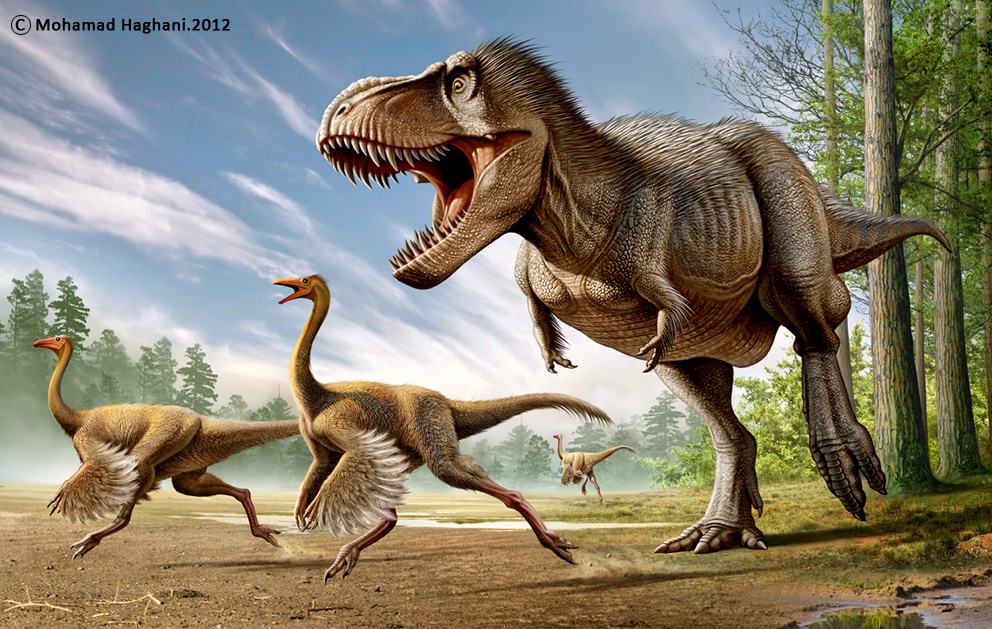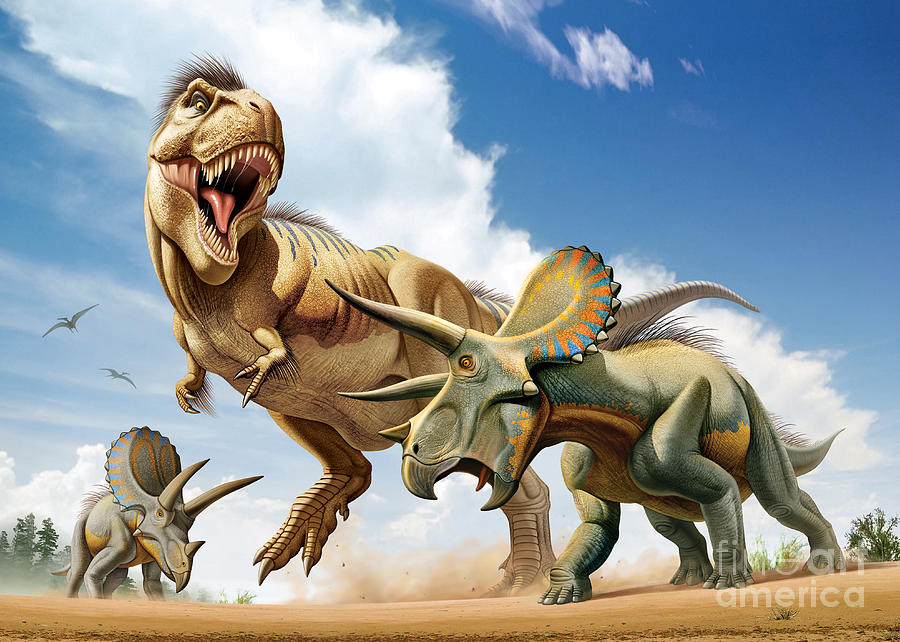Post by Admin on Jan 23, 2015 18:17:30 GMT

Tyrannosaurus Rex
Pronunciation: Ty-Rann-o-SAW-US RE-X
Description: LARGE bipedal carnivore
Order: Saurischia / Tyrannosauridae
Name means: "Tyrant Lizard King"
Period: Late Cretaceous, 67–65.5 MA
Location: North America
Height: 4.0 Meters ( 13.1 feet )
Length: 12. 8 meters ( 42 feet)
Weight: 6 - 8 tons ( over 12,000 lbs! )
Feathers?: No. (but you can have them if you want them)
Instincts
+ Defend own territory from rivals / large predators
+ Defend own offspring to the death
+ Beware of water
+ Steal from any kill found; hey no hard work right?
+ Hunt if no carcasses are around to provide easy meals
+ be social!
+ reproduce and raise offspring
Verbal Communication
snort - annoyed
roar - aggressive warning, intimidation, scared, etc.
bellowing roar - about to attack, angry
Purr - content, happy, pleased.
light low sounds - friendly, chill, will do no harm.
rumble - content, pleased, happy
Nonverbal Communication
- Lowering head and body: submission,
- Sitting: relaxed, at ease
- Muzzle rubbing: affection
- Biting another: annoyed, punishment
- Mock charge/Charge: Open display of aggression, about to attack
Social Life
Tyrannosaurs are social creatures, they often live in small family groups. Though they can also thrive as a solitary predator or together as a mated pair. They are social and react to other predators; though as long as that predator poses no threat to them or to their families. Family groups usually include adults and their chicks. They usually stake a claim in one area and tend to stay there, except on hunting trips.
Family groups usually consist of a mated pair, their offspring of various ages, a few siblings of the mated pair may be included, otherwise it be a few unrelated individuals.
Diet
Tyrannosaurs are opportunists much like the raptor; and will eat anything they can get their big jaws around. Be it living, or be it dead. On active hunting they will either hunt with their family group together, or individually, as long as there is food. Feed a t-rex and it is a happy t-rex.
Breeding
Tyrannosaurs grow and mature fairly quickly for their size, however they reach sexual maturity at about 5 - 8 years of age. During this time life becomes extremely complicated and dangerous. Breeding is quite risky business, as either male or female can eat your delicious face if they don't like you. Tyrannosaurs often pair up for life, but there are a rare few individuals whom do not pair up for life. Some mate and leave their chosen mating partner behind to raise chicks on their own.
Those whom do pair up for life often form family social groups, and will raise their chicks together.
Nesting
Rexes will want a safe, isolated location for them to be able to nest, usually at their own territory. The female will scratch up what she can for a nest, and lay her eggs. The parents or family group will fiercely guard their nest and territory.
After a few weeks the eggs hatch, and are cared for by both parents until the chicks reach sub-adult. The most selfish chick survives to adulthood and is the first to hunt. Once they reach sub-adult at 3-5 years, the offspring are shoved out of the family group to splinter off and form their own groups.
Males may live in bachelor bands for a time until they can join in groups of their own. Sisters may group together or separate. It's not uncommon for sisters to remain in a group for life.
Extra: Tyrannosauridae

